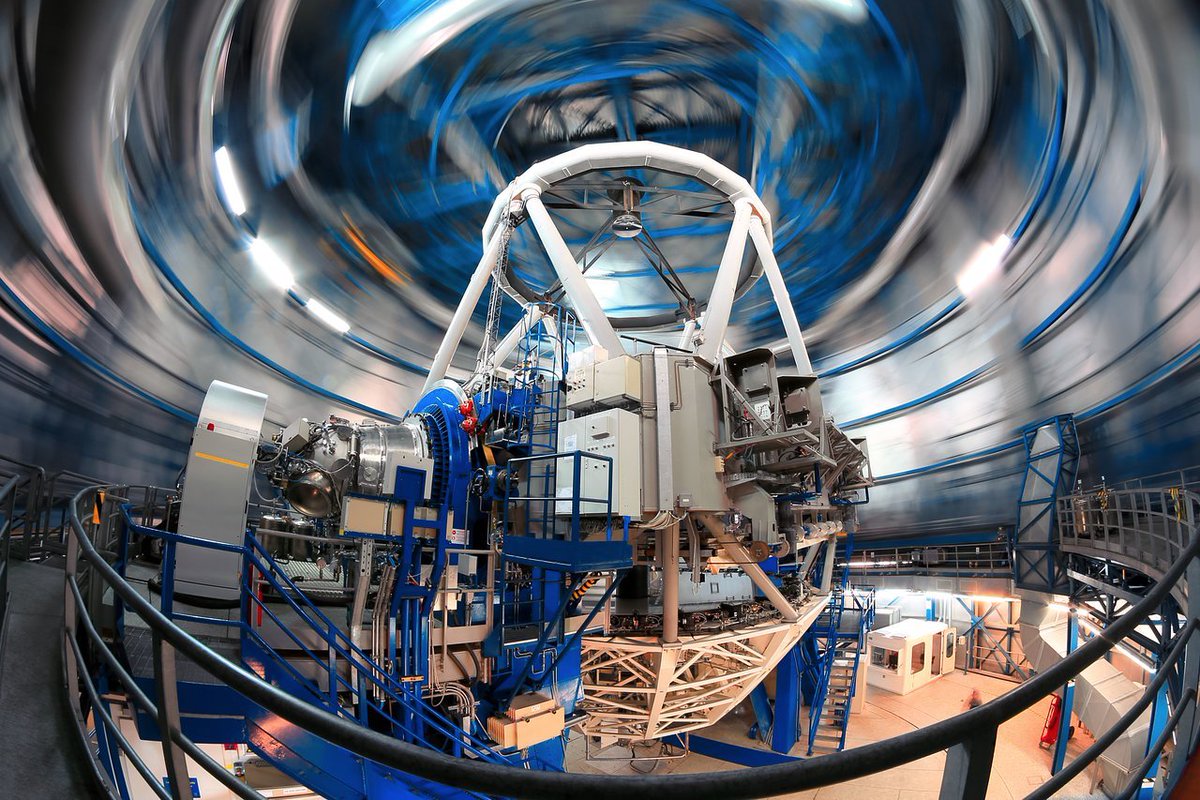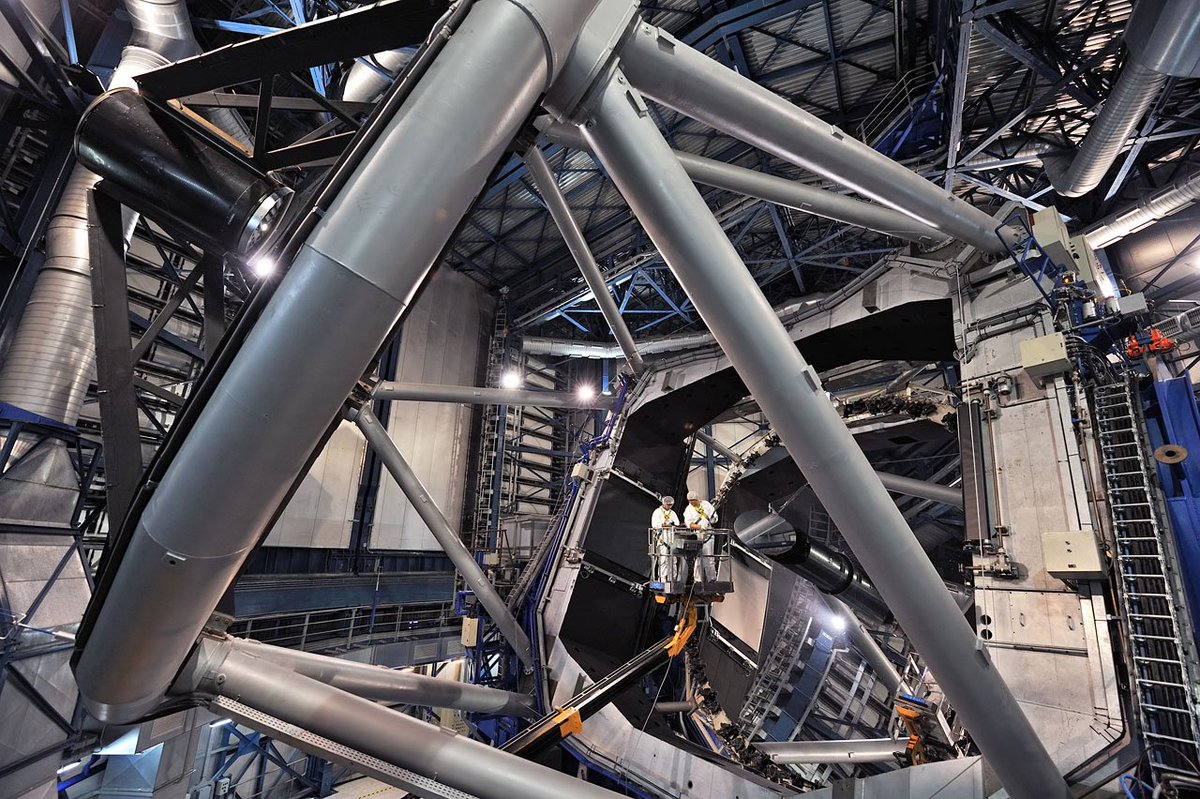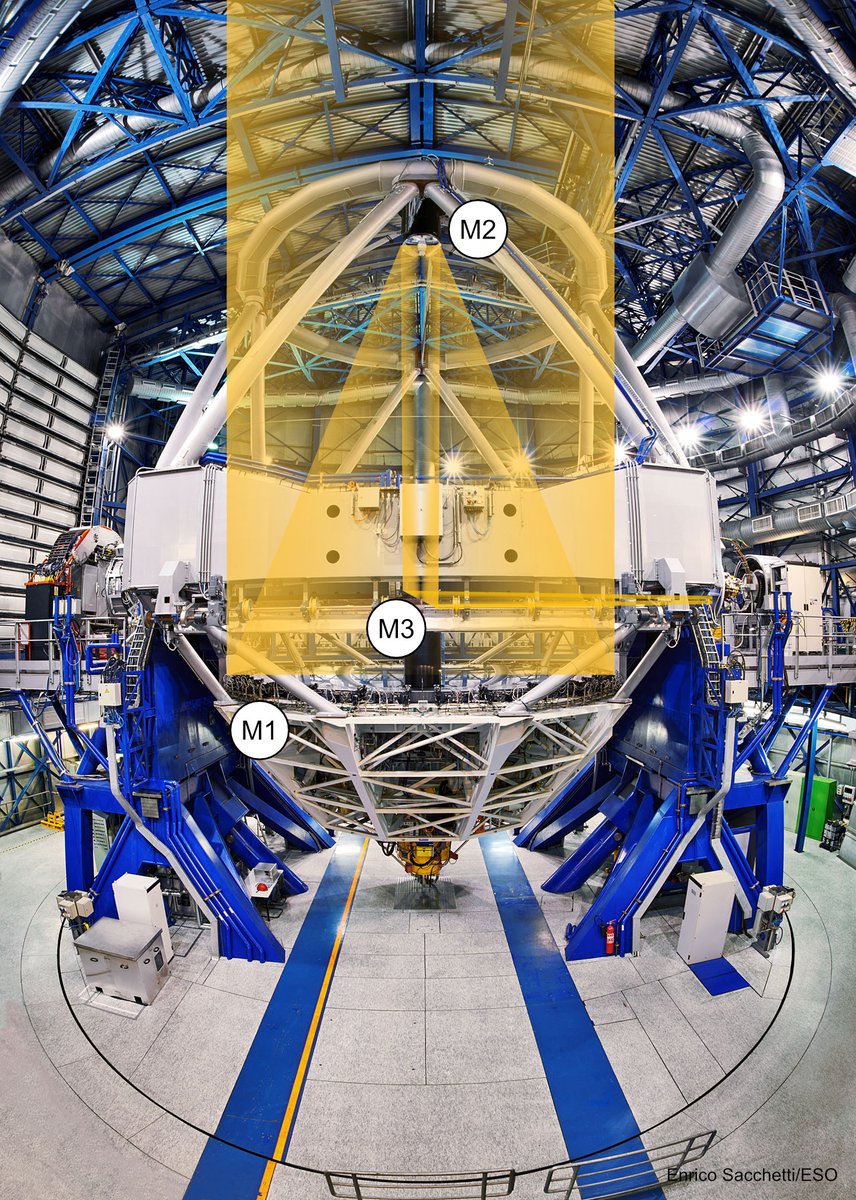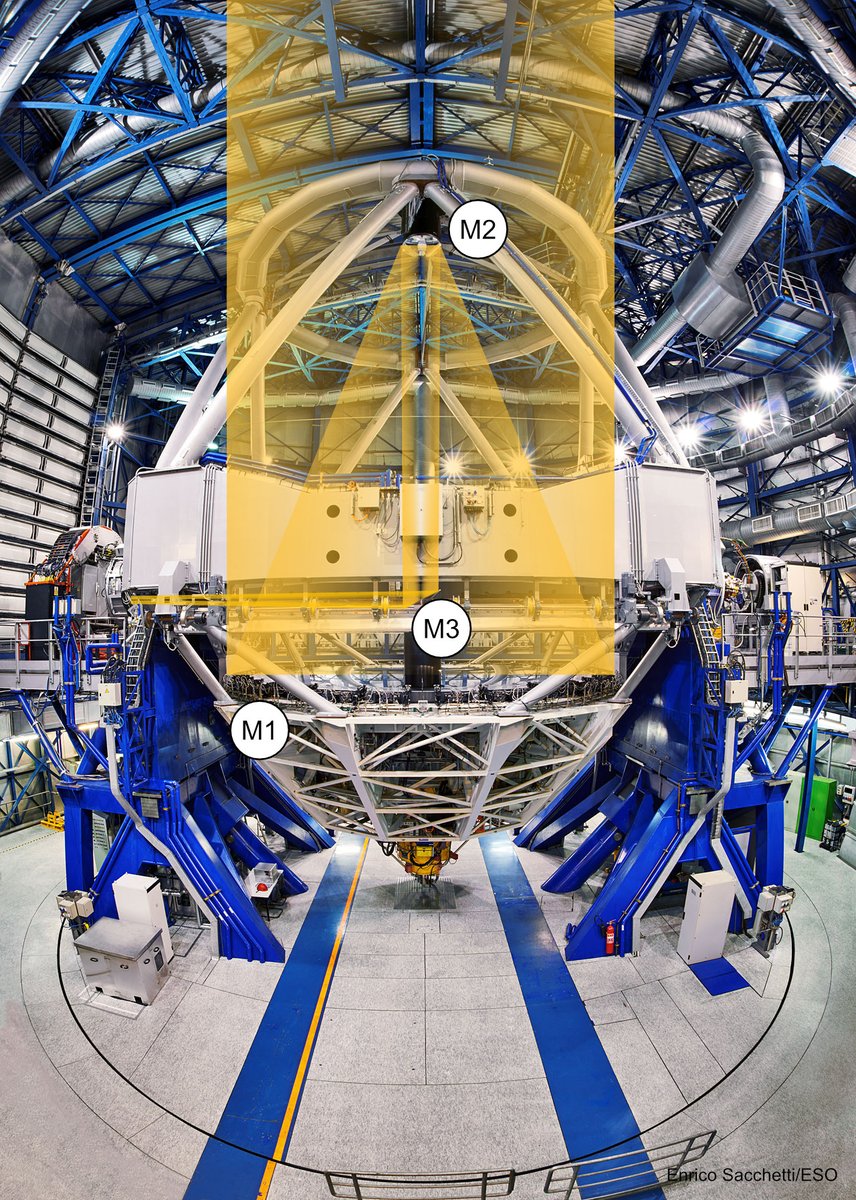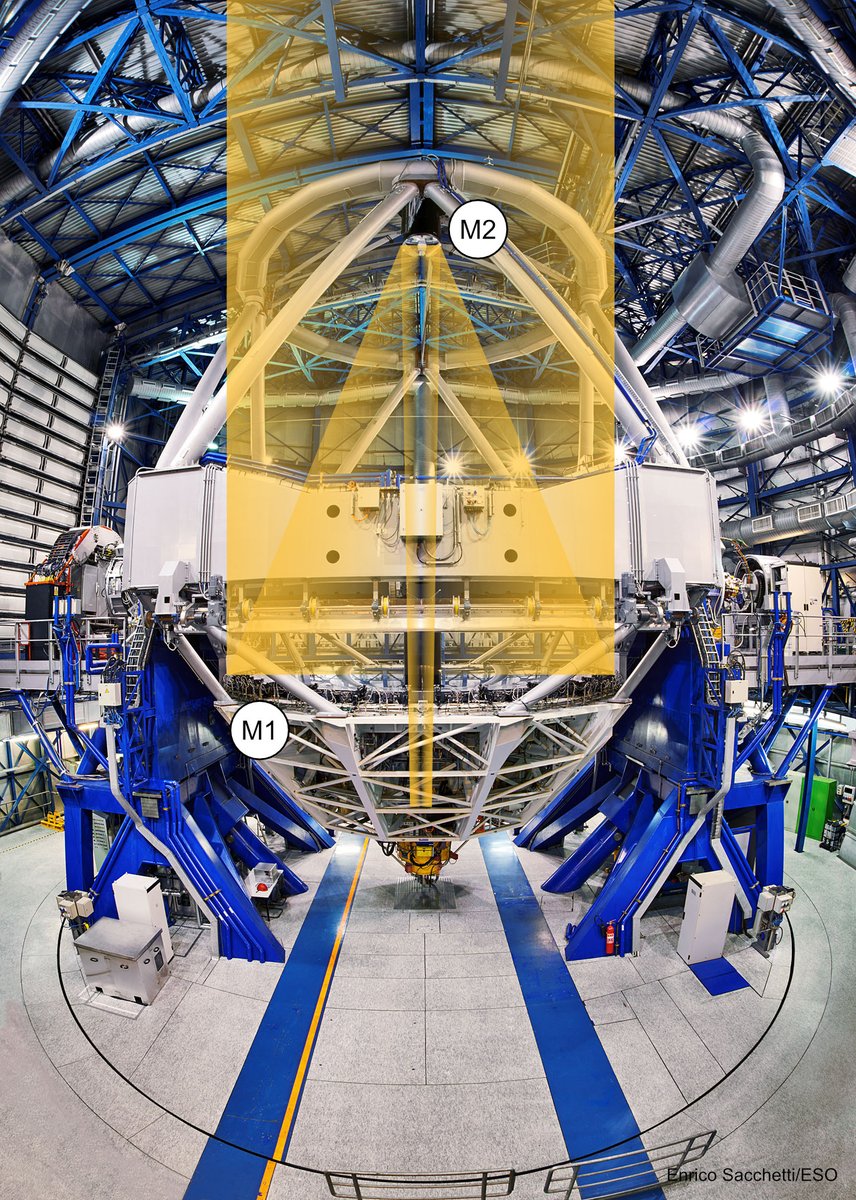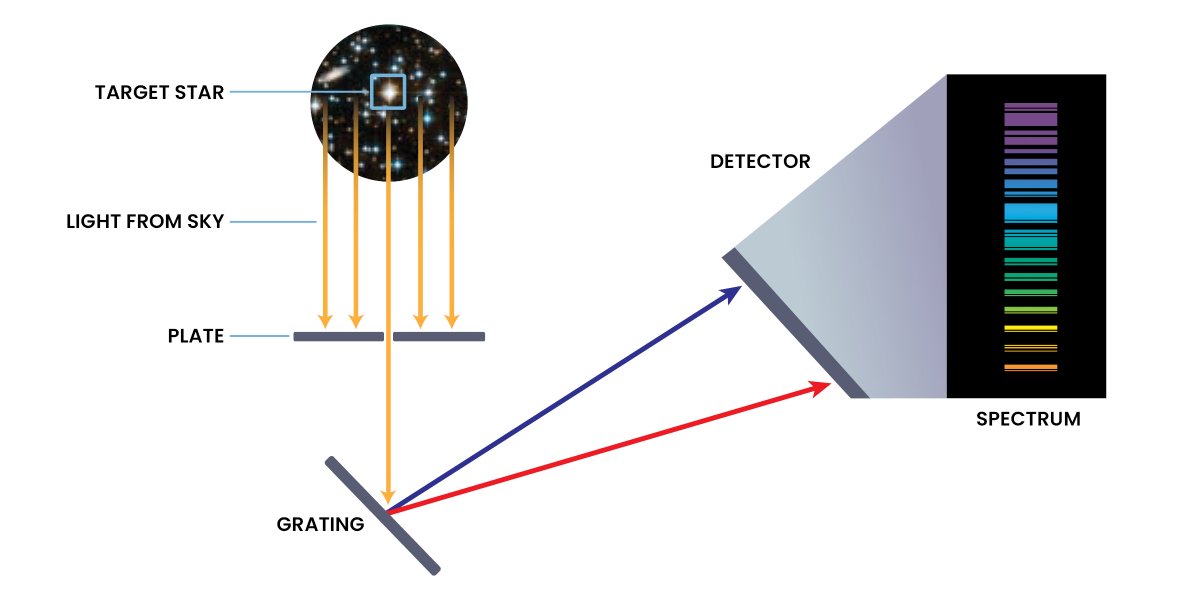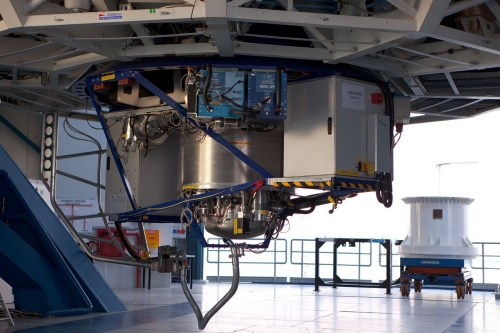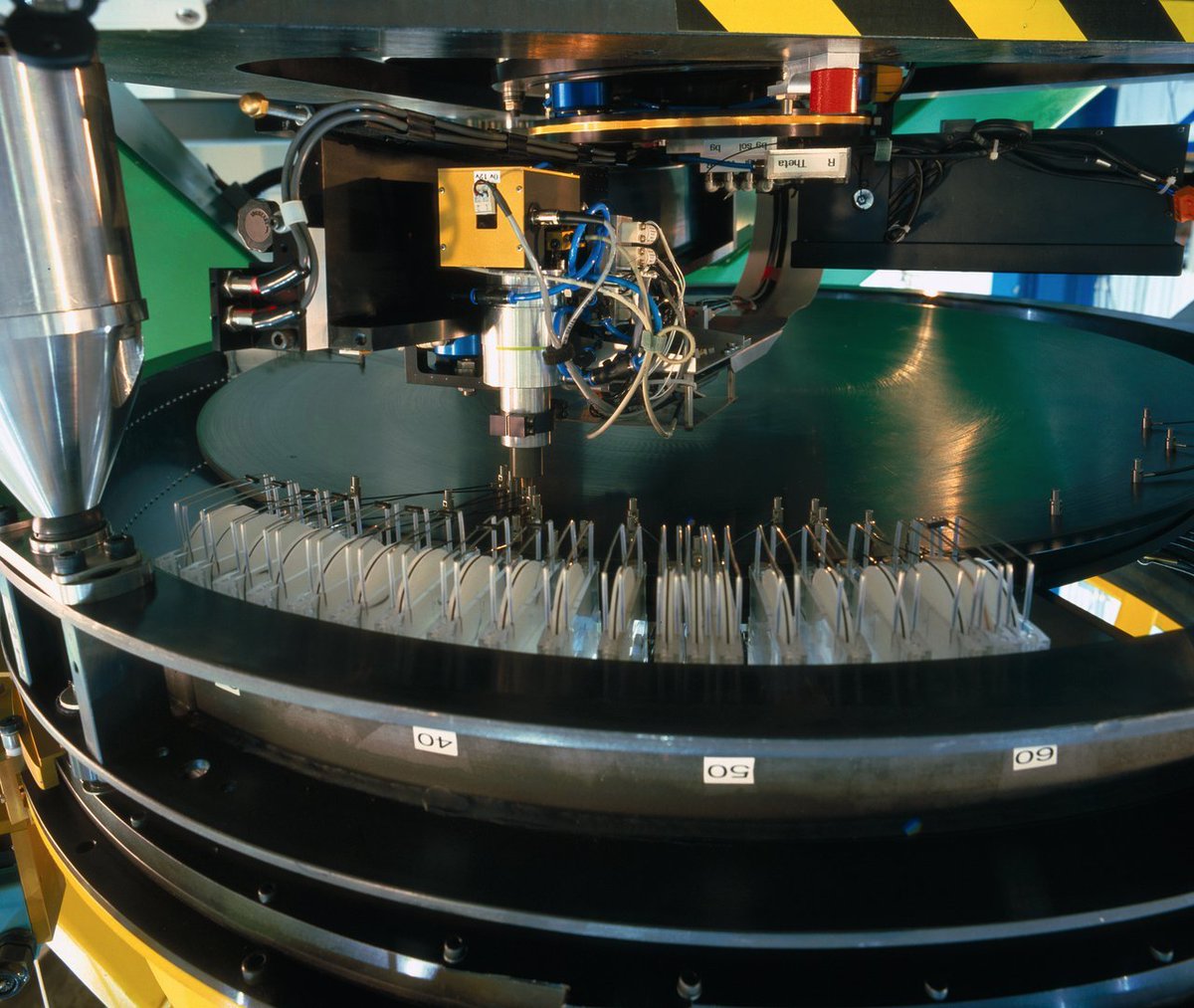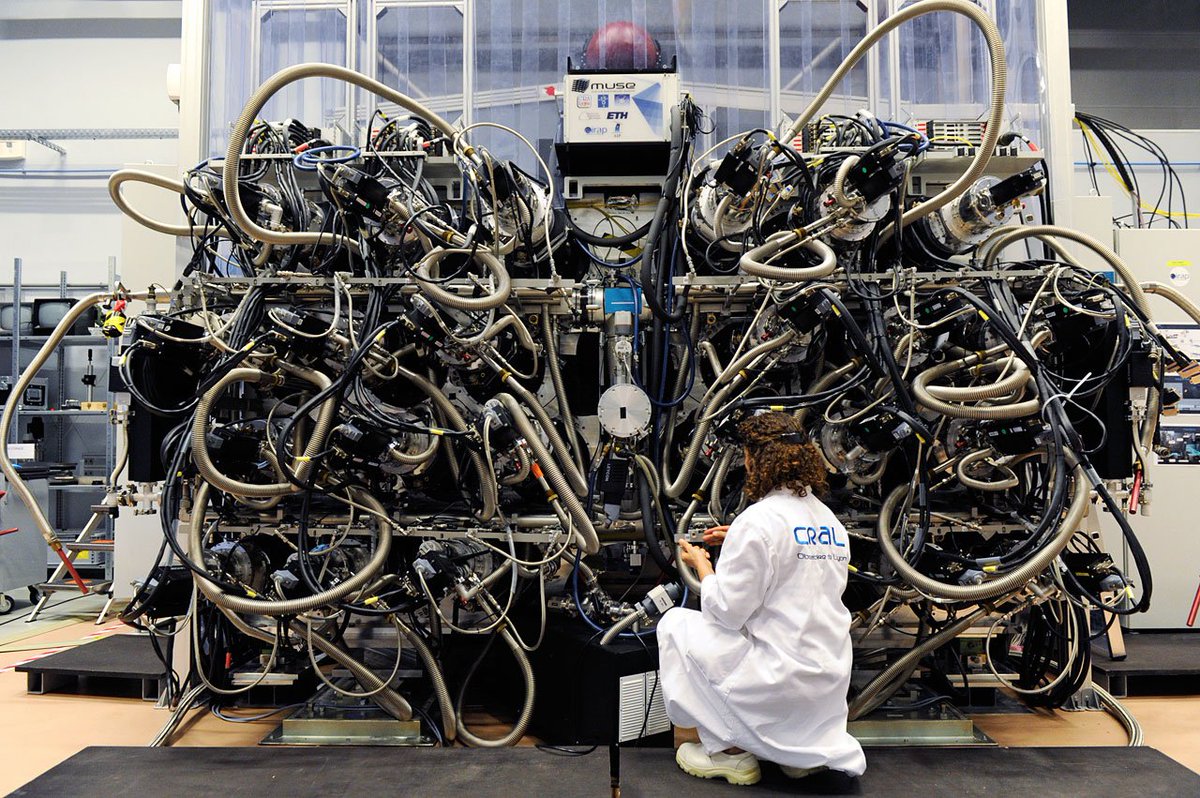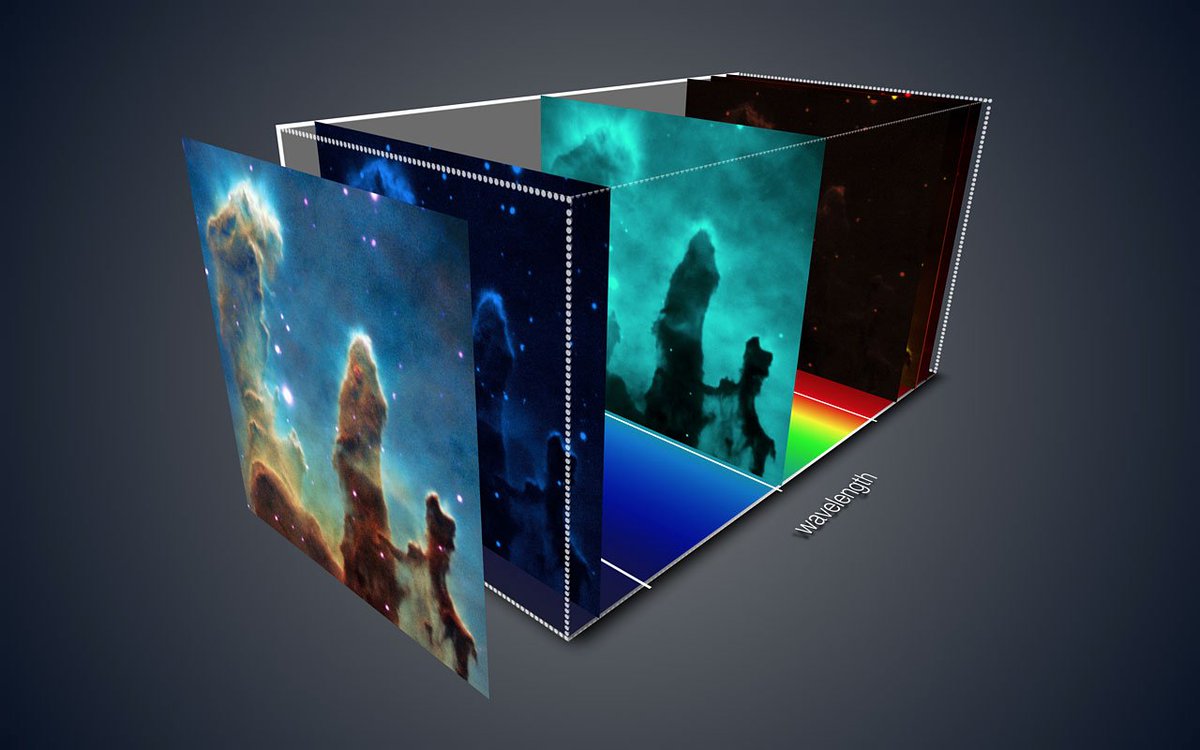1/ Hi there! Yesterday I showed you around the Paranal summit and the residencia. Today we’ll see the telescopes from the inside, and you’ll learn why they have so many different instruments. Grab your safety helmet and let’s go!
( ESO/F. Char)
ESO/F. Char)
(
 ESO/F. Char)
ESO/F. Char)
2/ This is how one of the Unit Telescopes looks like from the inside. The primary mirror is 8.2 m wide! It’s coated with a thin reflective layer of aluminium. Can you guess how much aluminium is needed? Don’t cheat! I’ll tell you at the end of the thread :-)
 ESO/G. Hüdepohl
ESO/G. Hüdepohl
 ESO/G. Hüdepohl
ESO/G. Hüdepohl
3/ The light bounces on the primary mirror (M1), then on the secondary mirror (M2), and then goes down again towards the tertiary mirror (M3), which is flat and reflects the light towards an instrument on the side (what we call a Nasmyth focus).
4/ The M3 mirror is mounted on a tower that can be turned around 180º, directing the light towards another Nasmyth focus to the other side of the telescope, reaching a different instrument.
5/ The M3 mirror can be also opened in order to let the light go through and reach yet another instrument mounted at the bottom of the telescope, in what is called a Cassegrain focus.
6/ Using a set of prisms and mirrors, light can be also redirected under the ground, the so-called Coudé room. From there it can be channeled through tunnels towards the interferometry lab, where the beams can be combined.
7/ But why do we need so many different instruments? Can’t we just have one telescope with a camera, take pictures of the sky, and be done with it? Well, no. There are many ways to analyze the light of celestial objects, which require dedicated instruments. Let me show you.
8/ First, by observing the same object in different wavelengths or colors we can map different physical components. For instance, in the Horsehead Nebula dust blocks starlight at visible wavelengths (left), but in the infrared (right) dust becomes almost transparent.
9/ Different instruments also have different fields of view. Some allow us to study small areas in great detail, whereas others cover much wider fields of view and are optimize to carry out large surveys in a short amount of time.
10/ Another way to study celestial objects is to disperse their light into its constituent colors using spectroscopy. From an object’s spectrum we can infer its chemical composition, its temperature, or how far away its moving towards or away from us.
( NASA)
NASA)
(
 NASA)
NASA)
11/ Some spectrographs, like UVES or X-Shooter (shown below), allow us to study one single object in great detail.
( ESO)
ESO)
(
 ESO)
ESO)
12/ But in astronomy we typically need very large samples of objects in order to come up with meaningful results, and taking spectra of thousands of objects one at a time takes forever. Luckily there are instruments called multi-object spectrographs that tackle this problem.
13/ Some of these instruments work with masks on which we cut slits matching the positions of the targets we want to study. In this thread I explain with some videos how we manufacture said masks for one of our instruments: https://twitter.com/astro_jcm/status/1067436239588970499
14/ The problem with masks is that you need to cut them in advance. And even though we can store more than one mask in instruments like these, in practice we have limited choices of what to observe during a given night.
15/ There are a few ways around this. One is to use optical fibers. The FLAMES instrument at Paranal has a robot that can arrange about 130 fibers within the field of view in a few minutes, so we can observe different samples of objects during the same night.
( ESO)
ESO)
(
 ESO)
ESO)
16/ One or two hundred fibers is neat, but wouldn’t it be great to be able to observe, say, 10 times more objects at once? Well, with a strategy like the one I just showed you this wouldn’t work, because you wouldn’t be able to avoid fibers colliding with each other.
17/ The solution is to have the fibers already in place, and allow them to patrol a small area around them. The upcoming @VLT_MOONS instrument will work just like that: it’ll have about 1000 fibers that can be moved around as shown below: https://twitter.com/VLT_MOONS/status/1004727206592106496
18/ The 4MOST instrument, currently being built by @AIP_Potsdam, will have 2400 fibers that can be configured in real time as shown below. 4MOST will replace VIRCAM at the VISTA telescope, and it will tirelessly gather millions of spectra all over the sky.
19/ (Shoutout to our colleagues at the Anglo Australian Observatory for leading the development of the fiber positioners of FLAMES and 4MOST!)
20/ Now, one problem with multi-object spectrographs is that you have to choose in advance which targets you want to observe. But wouldn’t it be great to just point somewhere and get one spectrum for every single position within the field of view, without gaps?
21/ We can do this with instruments called Integral Field Spectrographs. There are a few at Paranal, the most famous one being MUSE, which looks like something straight out of a steampunk novel and I think that's awesome :-)
 Eric Le Roux / Service Communication / UCBL / MUSE
Eric Le Roux / Service Communication / UCBL / MUSE
 Eric Le Roux / Service Communication / UCBL / MUSE
Eric Le Roux / Service Communication / UCBL / MUSE
22/ When you point an instrument like this to, say, a galaxy or a nebula, you’re able to measure the composition and velocity at every single location within the field.
( ESO)
ESO)
(
 ESO)
ESO)
23/ So, you see, each one of these observing techniques requires an instrument built specifically for that. And I haven’t even talked about other methods, like adaptive-optics, polarimetry, interferometry… Most instruments actually combine several techniques.
24/ Therefore, by having several telescopes (and several instruments per telescope), observatories can make a much more efficient use of their observing time.
25/ For instance, in the Unit Telescopes at Paranal it takes less than 10 minutes to move the M3 mirror, so during the night we can switch instruments on the fly, depending on the external conditions and the scientific priority of the various programs.
26/ That's it! Tomorrow I’ll show you some of the night pictures I’ve taken over the years at Paranal with my camera. After all, apart from being a professional astronomer I’m also an amateur one (yes, you can be both!), and I love shooting night scenes up there :-)
27/ And no, I haven’t forgotten about the aluminium quiz! So, could you figure out how much aluminium it takes to coat the 8.2 m primary mirror of a UT? The answer is…
.
.
.
.
.
<drumroll>
.
.
.
.
.
.
.
.
.
.
<drumroll>
.
.
.
.
.
28/ 12 grams! That’s the weight of an empty can of soda! Crazy, huh?
I'll be happy to answer questions throughout the day. In any case, see you tomorrow with some nice pictures of how Paranal looks like at night!
I'll be happy to answer questions throughout the day. In any case, see you tomorrow with some nice pictures of how Paranal looks like at night!

 Read on Twitter
Read on Twitter